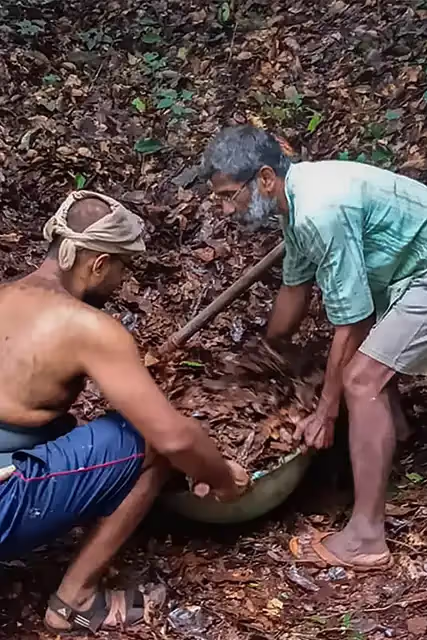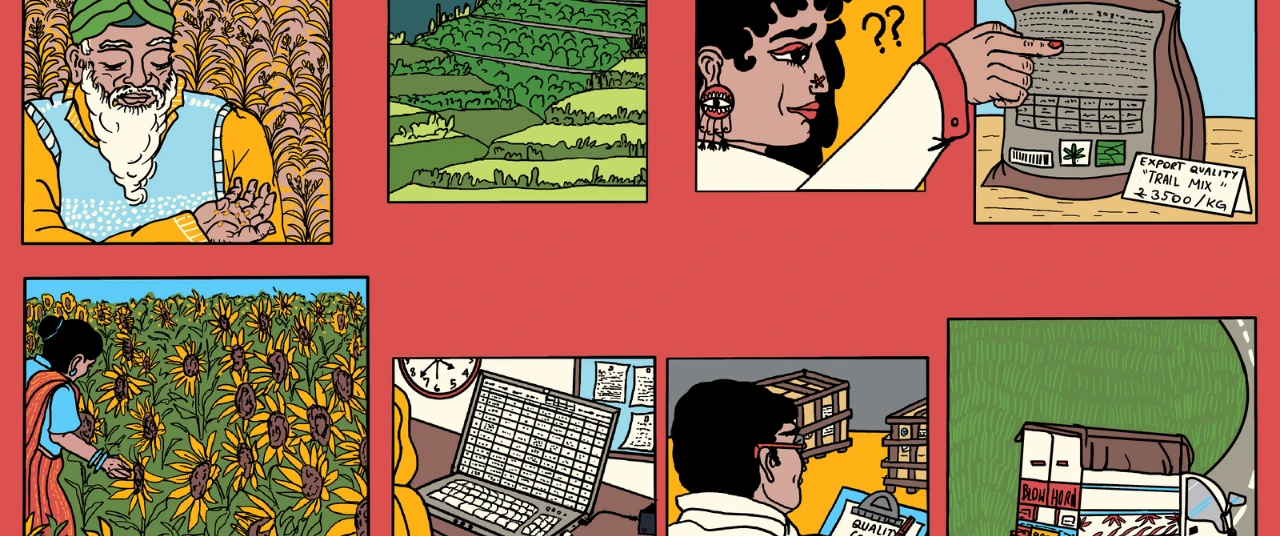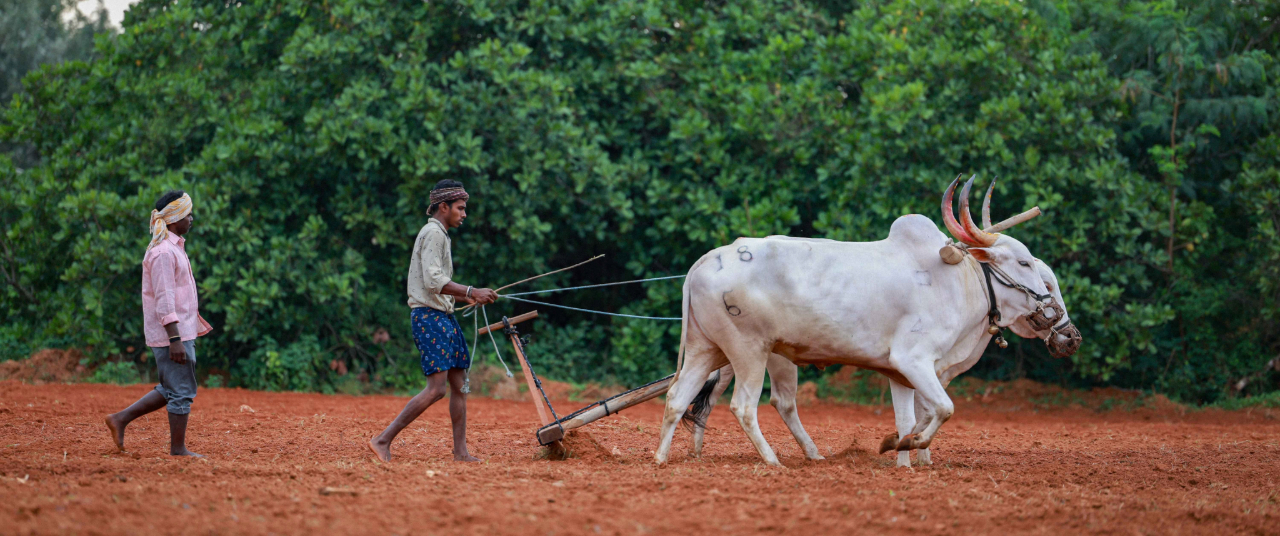At Sangatya commune, sustainability is embedded in every task






Step into Sangatya, and you’ll find a world both radical and timeless. Before you even arrive, a document lands in your inbox – a primer to prepare you for the journey. It begins with a statement: “Sangatya is a free association of free people, living a life consistent with the values of fairness and sustainability.” In these two sentences lies the essence of this six-acre agricultural commune: a commitment, almost audacious in its scope, to crafting a future where both the Earth and its people are liberated from social divisions and environmental degradation.
The idea of Sangatya was born in the minds of a group of engineers who wanted to make a difference. They envisioned a return to traditional farming methods, rejecting modern conveniences like taps, LPG, and commodes in favour of hand-drawn well water, firewood, and compost toilets. They found a place to make their vision a reality in Nakre, a village near Karkala where farmers were abandoning traditional agriculture and planting areca plantations in the hope that their children would move to the city. In 2007, the engineers established Sangatya, a farming setup that seemed almost anachronistic to the neighbours.

For Shreekumar, a former professor from NIT Surathkal who now teaches ecology at Manipal University’s Gandhian Centre, Sangatya is more than a home; it’s a way to live his activism. After years spent fighting for workers' rights and environmental justice in movements like the Narmada Bachao Andolan, Shreekumar felt that the next step was to be the change. “It is not enough to protest specific instances of injustice” he says, “but one must generate hope in the face of environmental and social despair.”
Daily life
At Sangatya, the work begins with the rising sun. Firewood is lit, and rice–grown in their own fields–is brought to a boil. Once cooked, it’s stored in a hotbox to conserve energy. For lunch, a century-old grinding stone, left behind by the previous owners, is used to prepare curry. Milk comes from the cowshed, where four indigenous cows are housed, including a rare Malnad Gidda breed. After a simple breakfast of coffee and thindi, the residents head to the fields, tending to rice in the wet season and pulses during the dry months.

Everything at Sangatya is done with a deliberate rejection of excess. Instead of relying on irrigation pumps – made easy by the government’s provision of free electricity – the members haul water manually from the nearby river, a task both physically demanding and consciously chosen. Their goal: to avoid the overuse of resources that so often comes with modern convenience.

By 11 am, the sweltering coastal sun demands a break. The residents retreat to their simple, 50-year-old home. Those needing a nap at midday can lie on a mat on the cool floor, while others might enjoy browsing through the Sangatya library. The library has a few hundred books on subjects like philosophy, ecology, and economics, including some by friends of Sangatya who have spent time there. As Shreekumar says, “Work, leisure, and intellectual activity blend together when you live a connected life.” You might find yourself resting while discussing Fukuoka or using the box charkha (one of Sangatya’s treasures) while deciding on the sambar for dinner.
One must generate hope in the face of environmental and social despair
Sustainability in the mundane
At Sangatya, even simple chores reflect their commitment to sustainability. For example, dishes are cleaned using ash from the stove, and the water from rinsing is collected and given to a plant that needs it. The stove also produces charcoal, which is crushed and mixed into the soil to help it absorb nutrients. Even the toilet is part of this natural cycle—food becomes waste, waste becomes compost, and once it’s safe, the compost is returned to the soil. In this way, everyday tasks like washing dishes or cleaning the toilet contribute to improving soil health.

The day’s work is planned after dinner. No one is in charge, and tasks are allocated based on physical ability and willingness. This absence of a formal hierarchy reflects Sangatya’s anarchic principles: there is structure, but it emerges naturally through voluntary cooperation. The community’s success depends on the collective commitment of each resident, and while this system may sacrifice some efficiency, it instils a sense of shared ownership and non-exploitative participation.
Sangatya’s message is simple but profound: if we are to survive the environmental and social challenges of the future, we must rethink how we live now. The members of this small commune are already doing so—quietly, radically, and without fanfare. They offer no easy solutions, but they embody the hope that a different way of life is not only necessary but within reach.

What’s in store?
Sangatya is constantly evolving. This year, their rice fields will focus on native varieties like Nagasampige, and their new cowshed opens up opportunities for natural fertilisers like jeevamrutha. But with these ambitions come challenges. The community must balance a transient population of visitors – eager to learn but often inexperienced – with the need for skilled, long-term residents. Hiring outside labour is rare, and when necessary, it’s neighbours from marginalised communities who are given priority.
Sangatya’s reliance on word-of-mouth, rather than social media, to spread its message is another challenge. The founders believe that online platforms too often commercialise ideals like theirs, stripping away sincerity. As such, the commune has a minimal digital footprint, trusting that those truly interested in their mission will find their way to Nakre.

Sangatya stands as a living model of sustainable, intentional living in a world increasingly consumed by convenience and short-term thinking. Every meal cooked over firewood, every pot washed with ash, and every decision made through consensus is a reminder of what’s possible when people choose to live in harmony with the Earth rather than dominate it.
Explore other topics
References








.png)


